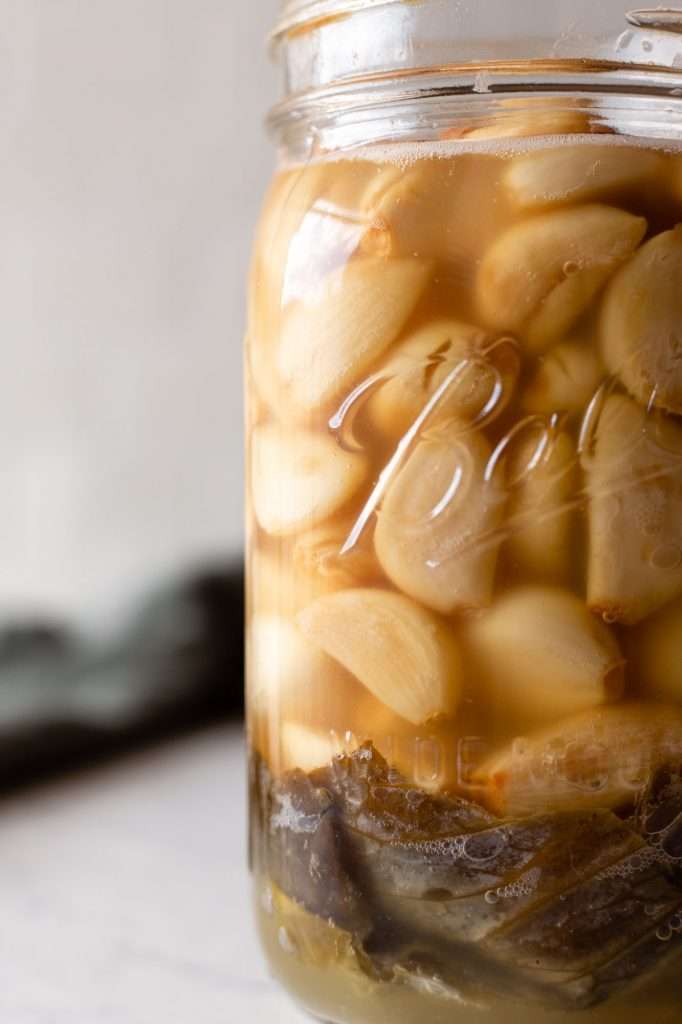- 400 grams garlic, peeled
- 50 grams fresh cabbage leaves
- 400 grams water
- 200 grams vinegar
- 24 grams sea salt
- Lightly crush each garlic clove with the flat side of a chopping knife to make it easier to peel. Peel each clove and set it aside. Let the garlic cloves rest for 10 minutes (this will ensure allicin benefits and flavor even after cooking).
- Preheat your oven to 450° F. Add the peeled garlic to a parchment paper-lined pan. *DO NOT USE ANY OIL*
- Dry Roast the garlic in the oven for 10 minutes, gently toss the garlic with a spatula, then roast for another 10 minutes.
- Fill a large bowl with ice and water.
- Immediately remove the garlic from the oven and scoop it all into the ice water bath. The cloves should still be firm but lightly toasted on the outside. Some cloves might be softer than others, but that’s fine.
- Dissolve 24 grams of sea salt in the water to create a brine.
- In a clean mason jar add the 50 grams of fresh cabbage leaves.
- Drain the garlic from the ice water bath. Add the 400 grams of garlic into the jar with the cabbage leaves.
- Add all of the saltwater brine to the jar.
- Place a fermentation weight in the jar to keep all of the garlic submerged. Place the mason jar lid on the jar and secure it in place.
- IMPORTANT: After 48 hours, you will notice bubbles and carbonation in the jar. (the tighter sealed your lid is, the more bubbles you will see) Remove the lid and the weight. Pour out about half of the brine and top off the jar with 5% acidity vinegar. Add at least 200 grams of vinegar (5% acidity). Place the lid on the jar and invert gently to mix. Replace the weight and the lid.
- Ferment for 4 weeks at room temperature. Set the jar in a glass dish to prevent messes. For the first few days, loosen the lid every 24 hours to burp the jar and let the gas out.
- After 4 weeks of fermentation, remove the fermentation weight and check to ensure the pH is right around 4 (it should always be below 4.5).
- Then move to refrigerated storage.

